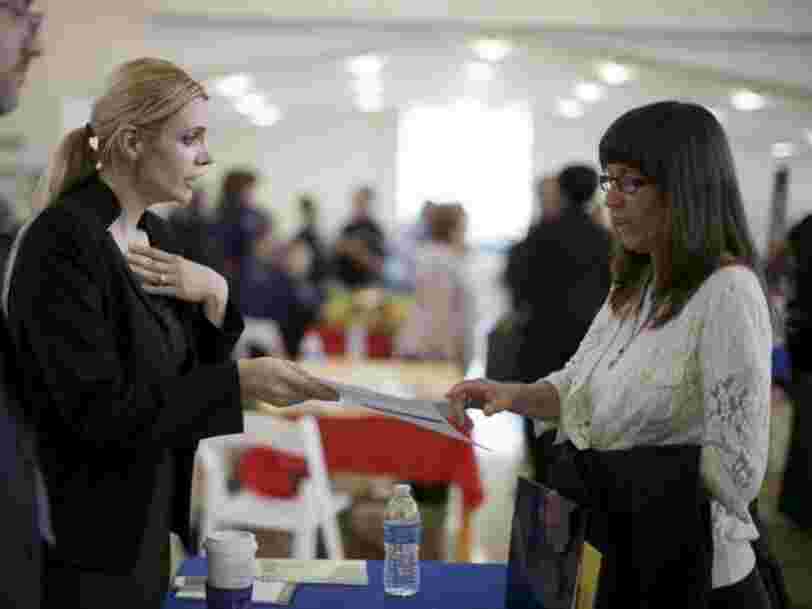3 'mismatches' that explain the labor shortage
Nick Lichtenberg,Juliana Kaplan | Publié le
- You may have heard that there's a labor shortage, as employers desperately woo workers.
- But mismatches in skills, where workers are located, and what they want out of work could be to blame.
- Those factors will probably continue to shape the strangeness of the labor market for a while.
- See more stories on Insider's business page .
Have you heard of this labor shortage? It's pretty wild, with millions of jobs open, and workers just not filling them.
It's a sign of the remarkable success of the vaccination campaign under President Joe Biden. The economy began reopening in earnest through the spring and is rapidly approaching normality in the summer, even as the Delta variant sparks a concerning number of cases in unvaccinated areas. On the other hand, it's also thanks to huge federal stimulus , as American consumers are unleashing a flood of money on the world's economy, and businesses can't staff up or keep up with it.
But something deeper is going on: What economists call a "mismatch." It's actually three mismatches at once.
Central bankers previously said a mismatch could explain the "jobless" recovery from the Great Recession. A 2013 paper by the New York Federal Reserve noted the job-finding rate was half that of 2006, and raised the theory that "the recession has produced a severe sectoral mismatch between vacant jobs and unemployed workers."
The reopening of 2021 is more like a jobless jobs boom, with record numbers of workers quitting , a record high number of job openings , and a stubbornly high unemployment rate . Here's what's going on under the hood.
(1) Skills mismatch
The skills people are hiring for aren't the same as what the work force has to offer. The right-leaning Chamber of Commerce has cited the skills gap as a driver of the shortage, arguing that workers need to be equipped with the skills to fill the openings all over the place.
That goes both ways: Data from the Bureau of Labor Statistics shows that May job openings were high in industries like retail and leisure and hospitality, both traditionally low-paying. For workers pushed out of the workforce, those positions may not fit with their prior experience - or their old compensation.
"The jobs that are out there aren't the jobs that I used to have, that I'm skilled for," Dina Jones, 54, a jobless worker in Texas who had previously worked in the airline industry for 27 years, previously told Insider . "And that's the part that hurts."
(2) Geographic mismatch
The jobs are where the workers aren't.
It's a downstream effect of the "Great Migration" of 2020 as the pandemic and work-from-home era encouraged a much bigger outflow from urban to rural areas than previous years. In many ways, the pandemic accelerated a generally southwestern shift among Americans that was already evident in the 21st century.
So many people moved to seasonal or remote locations in 2020 that they generated jobs booms where workers aren't numerous.
Jessica Rabe, the cofounder of DataTrek Research, told Insider relocations could also be driving quits up. Workers migrating to suburbs are quitting jobs in urban areas, which are struggling for labor.
(3) Expectations mismatch
People just have higher expectations of work now. Call it an existential reset brought on by a year of deadly disease and an unprecedented level of flexibility and working from home.
It turns out that when you give people those options, they like it, and now they're looking for it.
Betsy Mercado, senior vice president of human resources at Flynn Restaurant Group, told The Wall Street Journal that "People have an ability now to really choose where they want to work," and they want a good deal. Employers aren't used to offering that.
But they may have to. Employees would turn down a $30,000 raise if it meant they keep working at home, Insider's Caroline Hroncich reports . Meanwhile, low-wage workers are seizing on the labor shortage to demand a higher minimum wage , something that could plug up shortages . Either way, the evidence is clear: Blue and white-collar workers alike know that employers want them, and now they have the power.
Via PakApNews